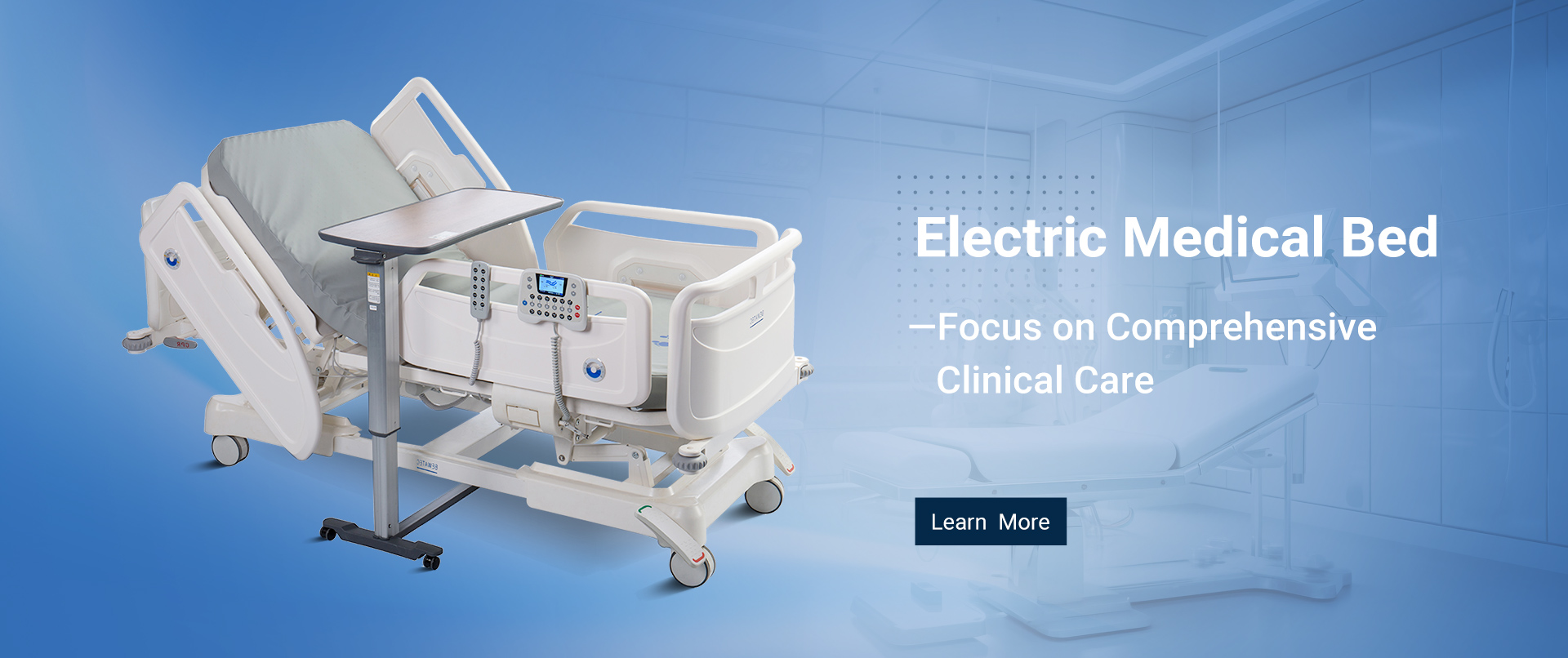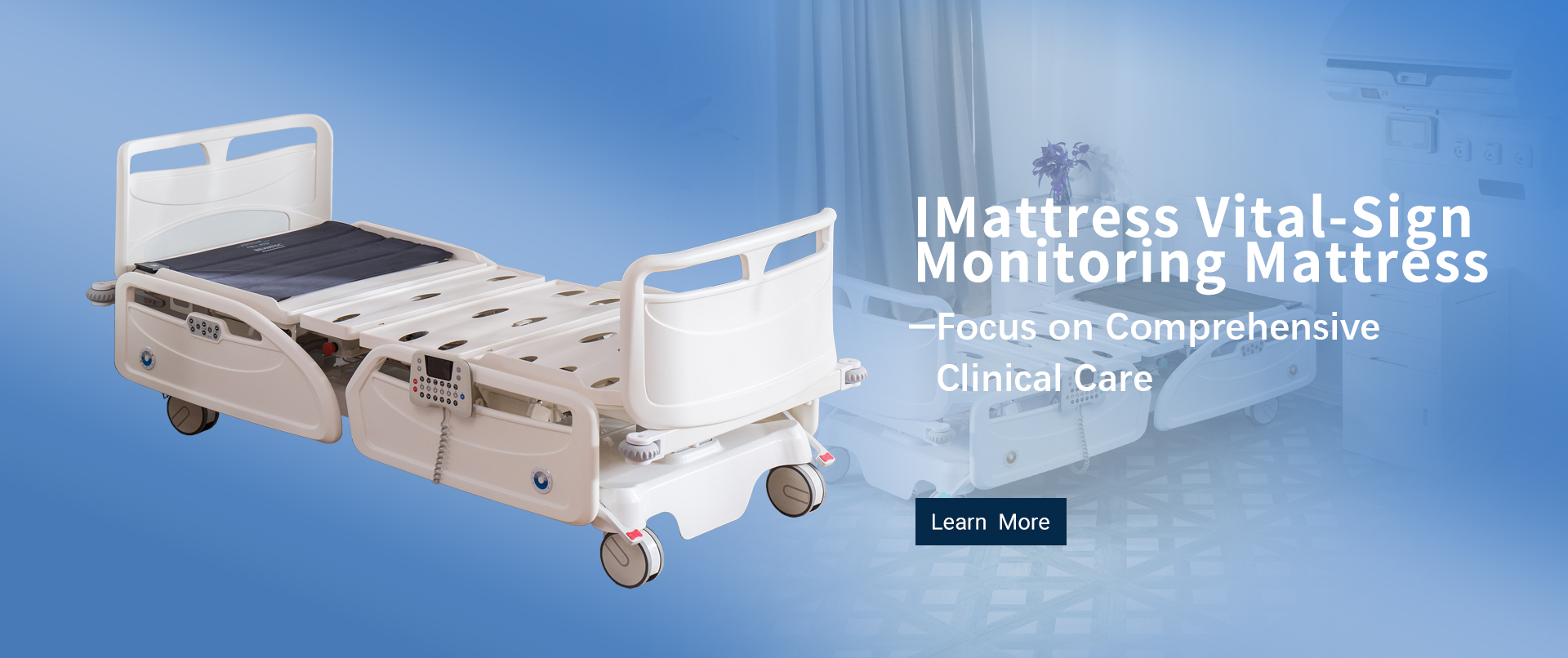
7 Essential Tips to Choose the Best Equipment for Your Hospital
Table of Contents
- Understanding Your Hospital's Unique Needs for Equipment
- Evaluating Equipment Quality: Key Features to Consider
- Budgeting for Hospital Equipment: Cost vs. Value Analysis
- Researching Suppliers: Finding Reliable Vendors and Brands
- Involving Staff in the Decision-Making Process: Why It Matters
- Staying Compliant: Regulatory Considerations for Medical Equipment
- Enhancing Patient Care: The Impact of Functional and Stylish Bedside Tables on Hospital Environments
- FAQS
- Related Posts
Picking the right equipment for a hospital is no small feat—it’s a huge decision that can really shape the quality of patient care and how smoothly everything operates. As hospitals work hard to step up their game in patient care, having reliable and advanced medical equipment is absolutely crucial. Here at Bewatec (Zhejiang) Medical Device Co., Ltd., we totally get how tough this selection process can be, and we’re all about supporting healthcare facilities as they dive into the world of digital transformation. Our mission is to offer smart medical solutions that not only boost patient safety and comfort but also tailor the care experience to each individual. In this blog post, we’re going to share seven key tips for hospital administrators and decision-makers. These tips are designed to help you navigate the tricky landscape of selecting the best equipment for your facilities, making sure you choose wisely in a way that matches both your operational goals and your patients' needs.

Understanding Your Hospital's Unique Needs for Equipment
Picking the right gear for your hospital is super important if you want to give your patients the best care possible. You've really got to look closely at what your hospital needs, which means taking a good look at the services you offer and what each department requires. Like, for instance, a bustling emergency room is gonna need top-grade trauma gear, while a general medicine ward might focus more on monitoring systems for patients. Figuring out what specialties your hospital has will really help you hone in on the tools and tech you actually need.
Here’s a solid tip: involve the people who work in healthcare when you’re making these decisions. Chat with doctors, nurses, and even the admin staff—they’ve got some really valuable insights into what goes down every day and the challenges they face. Also, don’t forget about maintenance and training when you’re getting new equipment; you want to choose stuff that’s not just good for now but has support around it for the long haul. And, of course, make sure the new gear plays nicely with what you already have to avoid messing up your hospital’s workflow.
Evaluating Equipment Quality: Key Features to Consider
So, when you’re thinking about picking out medical equipment for your hospital, quality really has to be the top priority. The first thing you wanna check is whether it meets the industry standards and certifications, right? You know, stuff from organizations like the FDA or ISO? When equipment ticks those boxes, you can feel a lot more confident that it’s reliable and safe. This is super important—not just for keeping patients safe, but it also helps keep your hospital’s reputation solid. Plus, diving into the manufacturer’s history can give you a good sense of how dedicated they are to quality and innovation.
Then there’s durability and lifespan, which is another biggie. Hospitals are busy places, and you definitely want gear that’s built to last through the heavy use. Look for warranties and service agreements because those show the manufacturer’s got faith in their products. Don’t forget to think about how easy the equipment is to use and what kind of training your staff will need. User-friendly gear means less time figuring things out and more time focused on patient care. By keeping these key factors in mind, hospitals can make smarter choices that truly lead to better health outcomes.
Evaluating Equipment Quality: Key Features to Consider
Budgeting for Hospital Equipment: Cost vs. Value Analysis
When it comes to budgeting for hospital equipment, it’s really important to look closely at the cost versus the value. You want to make sure that what you’re investing in actually leads to better quality care and smoother operations. It’s not just about how much you see on the price tag; you’ve got to think about things like maintenance, training, and the time the equipment might be sitting idle. When hospitals are picking out new gear, they should definitely focus on features and how long that equipment will last instead of just the initial cost. I mean, for example, if you splash out on some top-notch imaging equipment, you could end up with better diagnostics and fewer mistakes, which is so important for patient outcomes and can help keep those long-term costs down, especially when it comes to repeat procedures.
Plus, doing a solid value analysis means you need to think about the return on investment, or ROI, for each piece of equipment. Hospitals should really look at how each item fits into clinical workflows and impacts patient satisfaction. It’s a good idea to bring clinical staff into the mix during the decision-making process because they can offer valuable insights into the real-world pros and cons of what’s being considered. By tying budget decisions to these value-driven factors, healthcare administrators can make smart choices that satisfy financial needs while also boosting the overall quality of care at their facilities.
Researching Suppliers: Finding Reliable Vendors and Brands
So, when you’re gearing up to equip your hospital, picking trustworthy suppliers and brands is super important. I came across this report from MarketsandMarkets that says the global hospital equipment market is expected to hit a whopping USD 500 billion by 2026. That really shows how crucial it is to have high-quality medical supplies on hand. To make your way through this competitive field, doing some solid research on potential vendors is key.
One of the best tips I can share for finding reliable suppliers is to tap into online resources and look at industry reviews. Websites like HealthTrust and MedAssets give you a pretty comprehensive look at healthcare vendors, helping you figure out their reputation and the quality of their service. Plus, don’t underestimate the power of trade shows and industry conferences! These events are great for getting up close and personal with manufacturers and learning firsthand about their products.
And hey, don’t forget to think about after-sales support and warranty options from vendors. I saw this study in the Health Affairs journal that found that hospitals using equipment with solid maintenance support saw about a 20% boost in equipment reliability. So, making sure your vendor's got your back with good customer service can really make a difference in how well that equipment performs over time.
7 Essential Tips to Choose the Best Equipment for Your Hospital - Researching Suppliers: Finding Reliable Vendors and Brands
| Equipment Type | Key Features | Supplier Reputation | Warranty Period | Pricing |
|---|---|---|---|---|
| MRI Machine | High-resolution imaging, fast scan times | Excellent reviews from users | 5 years | $1,000,000 |
| Ultrasound Machine | Portable, clear imaging | Highly rated service support | 3 years | $50,000 |
| Patient Monitor | Real-time data, easy to use | Good customer feedback | 2 years | $7,000 |
| Defibrillator | User-friendly, quick charge | Well-known in the market | 5 years | $25,000 |
| Surgical Light | Adjustable brightness, shadow-free | Reliable supplier | 3 years | $15,000 |
Involving Staff in the Decision-Making Process: Why It Matters
You know, in any healthcare setting, picking the right equipment is super important for giving patients the best care possible. But here’s the thing—one aspect that often gets overlooked is involving the folks who are actually going to use that equipment. Bringing in frontline healthcare workers for these discussions not only makes them feel more invested but also helps ensure that the tools we choose really fit their everyday needs and flow. Trust me, their insights can highlight those little details and challenges that executives might not notice in their day-to-day operations.
Plus, getting staff involved in the decision-making process really helps foster teamwork across different departments. This creates a better grasp of what the facility truly needs. For example, nurses, doctors, and support staff each have their own views on how user-friendly equipment is, how easy it is to maintain, and how well it integrates with what they already have. By keeping the conversation open and encouraging feedback from everyone, hospitals can make smarter choices that boost their efficiency and ultimately lead to better patient outcomes. You know, when healthcare workers feel like their voices matter, they’re much more likely to get on board with new changes, which makes rolling out new technologies a whole lot smoother.

Staying Compliant: Regulatory Considerations for Medical Equipment
When you're picking out medical equipment for your hospital, getting a grip on the regulatory side of things is super important. It's not just about following the rules; it's about keeping patients safe and making sure your facility stays on the right side of the law. Different places have their own sets of rules for medical devices, like the FDA over in the U.S. or CE marking in Europe. So, it's really a good idea to familiarize yourself with these regulations before you hit the buy button. If you don’t, you could end up facing some serious repercussions—think fines or even legal trouble, which nobody wants!
And let’s not forget, every piece of gear needs to pass through some pretty rigorous evaluations and testing to prove it’s safe and effective. It’s wise to partner with vendors who really take compliance seriously and can back up their claims with certifications and documents showing their stuff meets all the necessary regulations. Also, keeping an eye on any shifts in regulatory standards is key since these can change as technology progresses or health care policies evolve. By making regulatory compliance a priority in your equipment selection, you’ll not only boost patient safety but also build trust in your hospital’s commitment to providing top-notch care.

Enhancing Patient Care: The Impact of Functional and Stylish Bedside Tables on Hospital Environments
The design and functionality of hospital environments play a crucial role in patient recovery. Among the essential elements that influence patient comfort and satisfaction are bedside tables. These seemingly simple pieces of furniture contribute significantly to the overall aesthetic and practical aspects of hospital settings. A recent study published in the *Journal of Healthcare Design* indicates that well-designed furniture can reduce patient anxiety by as much as 30%, promoting a more positive healing environment.
When considering bedside tables, esthetic appeal, lightweight construction, and sturdiness are paramount. Patients often require easy access to their personal items, medication, and essential care tools, making a functional and stylish bedside table a necessity. According to a report by the World Health Organization, a well-organized bedside area can improve clinical outcomes, as it allows nurses to provide efficient care without unnecessary delays. Tables that are not only practical but also visually pleasing can enhance the overall ambience of patient rooms, fostering a sense of comfort and tranquility during a challenging time.
Moreover, the materials used in these bedside tables can have a profound impact on infection control and maintenance. Lightweight, yet sturdy tables made from non-porous materials are easier to clean and sanitize, which is critical in a hospital setting where hygiene is paramount. A survey by the American Hospital Association found that hospitals that invest in high-quality, durable furniture experience a reduction in patient complaints related to the physical environment, leading to improved patient satisfaction scores and better overall health outcomes. Investing in functional and stylish bedside tables is not just a design choice; it's a strategic decision with significant implications for patient care.
FAQS
: Understanding a hospital's unique needs is crucial for selecting the right equipment, which ensures high-quality care for patients by addressing specific departmental requirements and services provided.
It is essential to involve healthcare professionals such as doctors, nurses, and administrative staff in the equipment selection process to gain valuable insights into operational challenges and needs.
Hospitals should consider the maintenance and training needs associated with new equipment to ensure long-term sustainability and minimize disruptions to existing workflows.
Key features to evaluate include compliance with industry standards, durability and lifespan, manufacturer's track record, warranty, service agreements, and ease of use for medical staff.
Equipment that meets industry standards and certifications, such as those from the FDA or ISO, reassures hospitals of its reliability and safety, protecting patients and maintaining the hospital's reputation.
Durability is vital as hospitals face heavy usage; investing in robust devices ensures they can withstand operational demands, minimizing the need for frequent replacements.
User-friendly equipment minimizes the learning curve for medical staff, enhancing efficiency in patient care and ensuring that the equipment is utilized effectively.
Hospitals should assess whether new equipment integrates seamlessly with current systems to avoid unnecessary disruptions in workflow and enhance operational efficiency.
In a busy emergency room, high-quality trauma equipment may be prioritized, while a general medicine ward might focus on patient monitoring systems.
A manufacturer's track record can provide insights into their commitment to quality and innovation, which is crucial for ensuring reliable medical equipment.
Related Posts
-

Ultimate Guide to Finding the Best Hospital Equipment Online for Global Buyers
-

Mastering Best Personalized Care: A Comprehensive Guide to Meeting Global Procurement Standards
-

Leading the Charge: China’s Premier Digital Health Monitoring Innovations for Global Markets
-

2025 Trends: The Ultimate Connected Health Monitoring Solutions for Wifi and 4/5G
-

China's Smart Manufacturing Leading Global Sales in Top Hospital Technologies
-

15 Amazing Bedding Solutions For Hospital Beds You Need to Consider
Blog Tags:









